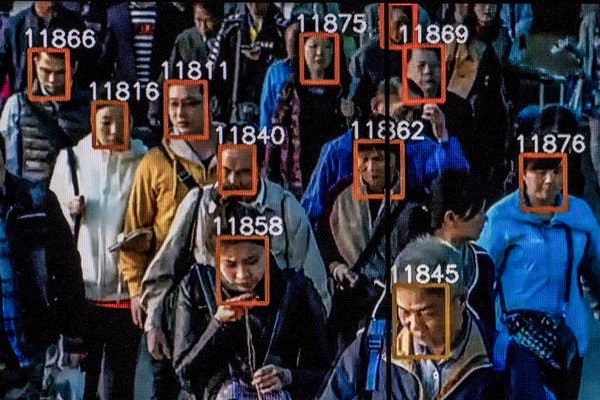‘What Does a Trucker Look Like?’ It’s Changing, Amid a Big Shortage
Image

Kristina Jackson, a 22-year-old driver based in Raleigh, N.C., is constantly reminded that she’s an outlier in an industry that is 94 percent male and two-thirds white.CreditTravis Dove for The New York Times
By Catie Edmondson
The industry — historically reliant on older, white male drivers — is facing a record shortage with an estimated 50,000 more drivers needed to meet demand, according to the American Trucking Associations. The lack of available drivers is rippling through the supply chain, causing a bottleneck of goods that is delaying deliveries and prompting some companies to increase prices.
The Trump administration and the industry are trying to alleviate the problem by loosening federal rules and enticing nontraditional drivers like women, teenagers and minorities to operate big rigs.
The Transportation Department has recently sidelined a number of safety regulations that trucking lobbyists said posed unnecessary burdens but that trucking unions supported, including requiring that rigs be outfitted with speed-limiting software and that drivers be screened for sleep apnea. The speed-limit measure, proposed by the Obama administration after a decade of lobbying from safety advocates, would have prohibited trucks from traveling faster than either 60, 65 or 68 miles per hour.
The White House is also backing a pilot program that allows younger drivers with military training to operate commercial vehicles across state lines. While the program is a trial, it represents a broader willingness to allow drivers under 21 to make interstate deliveries — something federal regulations currently prohibit.
around $42,480 a year, according to the Bureau of Labor Statistics.
You have 3 free articles remaining.
Subscribe to The Times
While autonomous trucks may someday negate the need for drivers, trucking executives say that day is still too far-off to solve today’s problem.
As the global economy has strengthened, demand for trucks to move goods has outpaced the supply of drivers, resulting in freight carriers setting higher rates and companies raising prices on products, in some cases by as much as 20 percent.
Food companies in particular, like Campbell Soup, General Mills and Mondelez International, have cited higher freight costs as weighing on profits in recent months. “Like the broader industry, we’re seeing sharp increases in input costs, including inflation in freight and commodities,” General Mills said in its third-quarter earnings release in March.

Inside China’s Dystopian Dreams: A.I., Shame and Lots of Cameras

The Big Business of Becoming Bhad Bhabie

Parents Behaving Badly: A Youth Sports Crisis Caught on Video
ADVERTISEMENT
Darren Hawkins, the chief executive of YRC Trucking, one of the nation’s largest freight carriers, said the severity of the shortage means that successfully tapping underrepresented pools of candidates is crucial.
“There’s an industry problem, and that is, we have to do a better job of attracting new people into the driving occupation, previous audiences we haven’t reached,” Mr. Hawkins said. “Right now the American Trucking Associations says we’re 50,000 drivers short, and those numbers will continue to grow. So we’ve got to open up other pieces.”
Trucking is already more onerous to enter than some of the industry’s competitors, including retail, construction and fast food. In addition to weeks in trucking school, which can cost several thousand dollars, it often requires drivers to spend long, solitary stretches of time away from home.
Women and minorities make up just fractions of the overall trucking population: 94 percent of drivers are men, and two-thirds of all drivers are white, according to a 2017 report released by the American Trucking Associations.
voiced opposition, arguing that the “riskiest cohort of drivers” should not be empowered to drive across state lines.
The trucking industry is hopeful that the pilot program, if successful, will eventually prompt the Trump administration to reduce the driving age for all types of people, not just those with military training. Elaine Chao, the transportation secretary, has publicly supported the program, which seeks to recruit 200 drivers under the age of 21 serving in the National Guard. The department will collect data on those drivers, such as accidents and miles driven, and then compare it with the data of other new drivers between the ages of 21 and 24.
Women in Trucking Association, said the industry was beginning to realize it must do a better job of recruiting women.
One of the biggest marketing hurdles the industry has to overcome is tamping down the prevailing notion that the road is not an appropriate — or safe — place for women.
“There’s still men out there who think women shouldn’t be driving trucks. They’re few and far between, but they’re vocal,” Ms. Voie said. “But the experience has changed a lot over the past five years because carriers are trying hard to make sure women have a good experience.”
Jahd Khalil contributed reporting from Omaha.
Image

Kristina Jackson, a 22-year-old driver based in Raleigh, N.C., is constantly reminded that she’s an outlier in an industry that is 94 percent male and two-thirds white.CreditTravis Dove for The New York Times
By Catie Edmondson
- July 28, 2018
The industry — historically reliant on older, white male drivers — is facing a record shortage with an estimated 50,000 more drivers needed to meet demand, according to the American Trucking Associations. The lack of available drivers is rippling through the supply chain, causing a bottleneck of goods that is delaying deliveries and prompting some companies to increase prices.
The Trump administration and the industry are trying to alleviate the problem by loosening federal rules and enticing nontraditional drivers like women, teenagers and minorities to operate big rigs.
The Transportation Department has recently sidelined a number of safety regulations that trucking lobbyists said posed unnecessary burdens but that trucking unions supported, including requiring that rigs be outfitted with speed-limiting software and that drivers be screened for sleep apnea. The speed-limit measure, proposed by the Obama administration after a decade of lobbying from safety advocates, would have prohibited trucks from traveling faster than either 60, 65 or 68 miles per hour.
The White House is also backing a pilot program that allows younger drivers with military training to operate commercial vehicles across state lines. While the program is a trial, it represents a broader willingness to allow drivers under 21 to make interstate deliveries — something federal regulations currently prohibit.
around $42,480 a year, according to the Bureau of Labor Statistics.
You have 3 free articles remaining.
Subscribe to The Times
While autonomous trucks may someday negate the need for drivers, trucking executives say that day is still too far-off to solve today’s problem.
As the global economy has strengthened, demand for trucks to move goods has outpaced the supply of drivers, resulting in freight carriers setting higher rates and companies raising prices on products, in some cases by as much as 20 percent.
Food companies in particular, like Campbell Soup, General Mills and Mondelez International, have cited higher freight costs as weighing on profits in recent months. “Like the broader industry, we’re seeing sharp increases in input costs, including inflation in freight and commodities,” General Mills said in its third-quarter earnings release in March.

Inside China’s Dystopian Dreams: A.I., Shame and Lots of Cameras

The Big Business of Becoming Bhad Bhabie

Parents Behaving Badly: A Youth Sports Crisis Caught on Video
ADVERTISEMENT
Darren Hawkins, the chief executive of YRC Trucking, one of the nation’s largest freight carriers, said the severity of the shortage means that successfully tapping underrepresented pools of candidates is crucial.
“There’s an industry problem, and that is, we have to do a better job of attracting new people into the driving occupation, previous audiences we haven’t reached,” Mr. Hawkins said. “Right now the American Trucking Associations says we’re 50,000 drivers short, and those numbers will continue to grow. So we’ve got to open up other pieces.”
Trucking is already more onerous to enter than some of the industry’s competitors, including retail, construction and fast food. In addition to weeks in trucking school, which can cost several thousand dollars, it often requires drivers to spend long, solitary stretches of time away from home.
Women and minorities make up just fractions of the overall trucking population: 94 percent of drivers are men, and two-thirds of all drivers are white, according to a 2017 report released by the American Trucking Associations.
voiced opposition, arguing that the “riskiest cohort of drivers” should not be empowered to drive across state lines.
The trucking industry is hopeful that the pilot program, if successful, will eventually prompt the Trump administration to reduce the driving age for all types of people, not just those with military training. Elaine Chao, the transportation secretary, has publicly supported the program, which seeks to recruit 200 drivers under the age of 21 serving in the National Guard. The department will collect data on those drivers, such as accidents and miles driven, and then compare it with the data of other new drivers between the ages of 21 and 24.
Women in Trucking Association, said the industry was beginning to realize it must do a better job of recruiting women.
One of the biggest marketing hurdles the industry has to overcome is tamping down the prevailing notion that the road is not an appropriate — or safe — place for women.
“There’s still men out there who think women shouldn’t be driving trucks. They’re few and far between, but they’re vocal,” Ms. Voie said. “But the experience has changed a lot over the past five years because carriers are trying hard to make sure women have a good experience.”
Jahd Khalil contributed reporting from Omaha.

